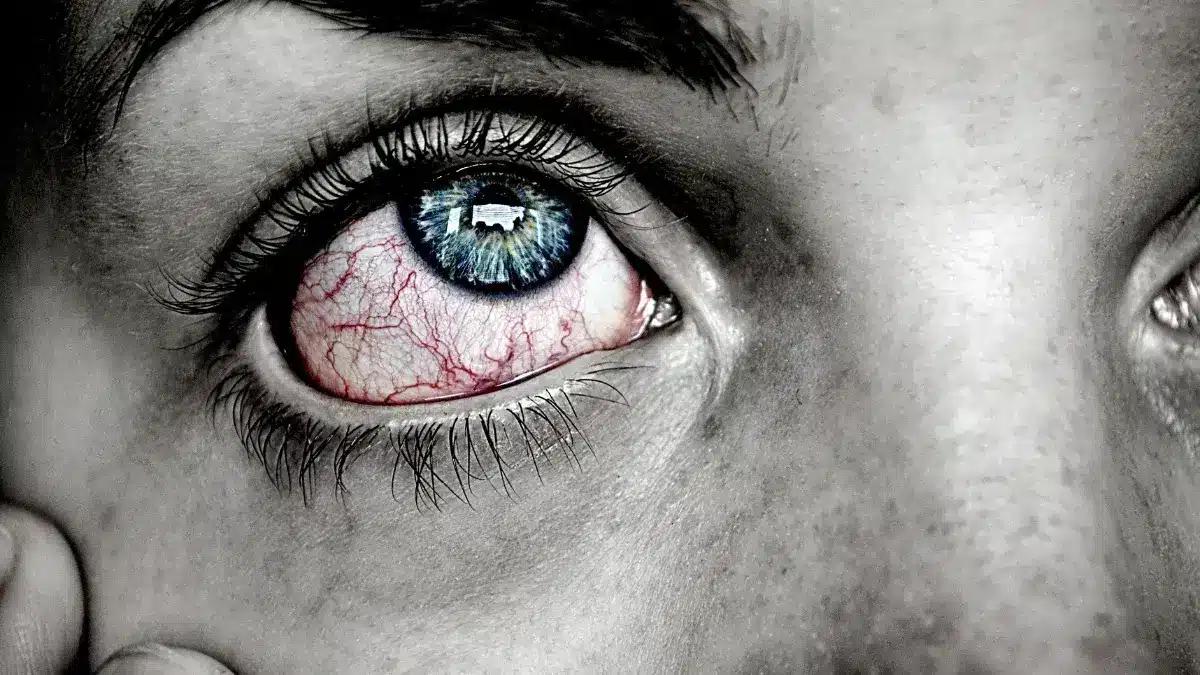Neurotrophic Keratitis is a rare and challenging eye condition that affects the cornea, the transparent outer covering of the eye.
The corneal disease causes serious vision problems and may lead to corneal inflammation, slow healing, and more.
Let us explore more about Neurotrophic Keratitis, its causes, symptoms, stages, and available treatment options.
What is Neurotrophic Keratitis
Neurotrophic Keratitis (NK) is a rare type of Keratitis.
It is a serious corneal disorder that is mainly caused by damage to the trigeminal nerve.
The trigeminal nerve connects the cornea to the brain and carries sensory information to the cornea.
Neurotrophic Keratitis makes the cornea less sensitive, as the cornea relies on nerve signals for maintenance and repair.
The reduced corneal sensitivity increases the chances of cornea damage and slows healing.
Also, a less sensitive cornea leads to less tear production and constant Dry Eyes.
Consult a doctor for regular eye tests and proper eye diagnosis.
Symptoms and causes of Neurotrophic Keratitis
 Source: zoranm_from_Getty_Images
Source: zoranm_from_Getty_ImagesUnderstanding the symptoms and causes of Neurotrophic Keratitis is important for early diagnosis.
The common Neurotrophic Keratitis symptoms include:
- Corneal Ulcers
- Photophobia
- Blurred vision
- Red Eyes
- Reduced vision clarity
- Dry Eyes
Recognizing the above symptoms is important and helps in accurate and effective treatment.
However, the causes of Neurotrophic Keratitis are also important for early detection.
The trigeminal nerve damage is the main cause of Neurotrophic Keratitis.
However, the other common causes of the rare condition include Herpes Simplex Virus I, Herpes Zoster Virus, and surgeries.
Surgeries involving the cornea or other eye parts can damage the cornea and lead to Neurotrophic Keratitis.
Consult a doctor for an accurate Keratitis diagnosis.
Neurotrophic Keratitis stages
Neurotrophic Keratitis has different stages, and each stage has unique symptoms and treatment options.
The condition is generally classified into three stages according to the Mackie classification.
The arrangement of stages is based on the severity of corneal damage, increasing from stage 1 to stage 3.
Let us explore the stages and their characteristics in detail:
Stage 1: The first stage shows characteristics like the cornea’s outer layer becoming dry and cloudy, superficial punctate keratopathy, and corneal edema.
Stage 2: Consistent epithelial flaws with oval or round shapes usually found in the upper half of the cornea.
Stage 3: The third stage may lead to serious symptoms like stromal melting and holes in the cornea.
| Superficial punctate keratopathy: A corneal condition that causes tiny wounds on the corneal surface. Corneal edema: Swelling of the cornea due to excess fluid retention. Stromal: The thickest layer of the cornea. |
Neurotrophic Keratitis is a serious condition, and regular eye tests are important to detect the rare condition early.
Neurotrophic Keratitis treatment options
 Source: Denisfilm_From_Getty_Images
Source: Denisfilm_From_Getty_ImagesThe treatment options for Neurotrophic Keratitis depend on the stages of the condition.
The doctors may try different approaches according to the specific Neurotrophic Keratitis stage.
Let us explore the treatment options in detail:
Stage 1 treatment: The doctor may recommend stopping the topical medications and using preservative-free artificial tears. The doctor may also include treating conditions that may affect one’s eye’s surface.
Stage 2 treatment: The doctor may recommend therapeutic contact lenses, Tarsorrhaphy (surgery to join the upper and lower eyelids), and Amniotic Membrane Transplantation.
Stage 3 treatment: The options include soft bandage contact lens, Tarsorrhaphy, Conjunctival Flap, and Keratoplasty.
Consult a doctor to observe treatment progress or adjust treatment plans.
Conjunctival Flap: A surgical technique where a portion of the conjunctiva is used to cover and protect the cornea.
Keratoplasty: A surgical procedure where a damaged cornea is replaced with a healthy donor cornea to restore vision.
Key takeaways
Neurotrophic Keratitis is a rare and serious eye condition that leads to corneal inflammation, Dry Eye, slow healing, and more.
The main cause of the eye condition is damage to the trigeminal nerve that carries sensory information to the cornea.
However, the other common causes include Herpes Simplex Virus I, Herpes Zoster Virus, and surgeries.
Neurotrophic Keratitis is classified into three stages based on the severity of corneal damage.
Each stage of Neurotrophic Keratitis has different characteristics and treatment options.
Consult an eye doctor for regular eye exams and proper diagnosis.
Frequently Asked Questions
Can Neurotrophic Keratitis be cured?
Yes, Neurotrophic Keratitis can be cured, but the treatment depends on the stage of the condition. The condition is classified into three stages based on the severity of corneal damage. The treatment options include artificial tear drops, surgery, therapeutic contact lenses, and more.
What is the most common condition associated with Neurotrophic Keratitis?
The most common condition associated with Neurotrophic Keratitis is Herpes Simplex Virus (HSV) infection. Herpes Keratitis comes before Neurotrophic Keratitis and may cause damage to corneal nerves and lead to reduced sensitivity.
How is Neurotrophic Keratitis diagnosed?
Neurotrophic Keratitis is diagnosed through specialized eye tests. The tests include corneal sensitivity tests, fluorescein staining to visualize corneal defects, tear production tests, and more.
A complete eye examination by an eye doctor is important for checking the severity of Neurotrophic Keratitis.
What causes Neurotrophic Keratitis?
The main cause of Neurotrophic Keratitis is damage to the trigeminal nerve. The nerve carries sensory information to the cornea and is important for communication between the cornea and the brain.
However, the other common causes include Herpes Simplex Virus I, Herpes Zoster Virus, and surgeries.
What are some tips for Neurotrophic Keratitis patients?
Neurotrophic Keratitis patients should prioritize eye protection and use preservative-free lubricating drops regularly. One should avoid dry environments and protect the eyes from irritants. Consult a doctor and get regular eye check-ups.
When referencing outside resources, GoodrxMedicine always provides full citations. To learn more about the measures we use to maintain the quality of our content, please review our Content Information Policy.











